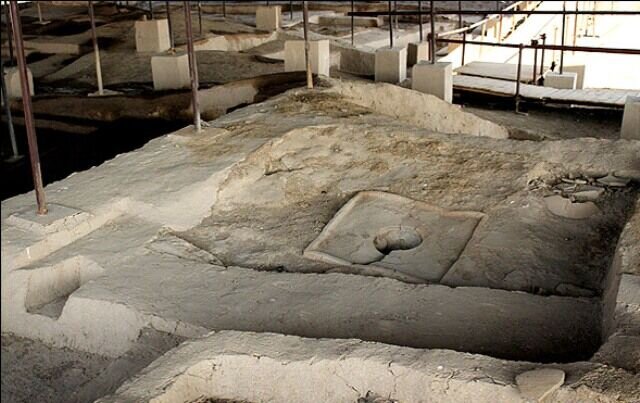7,000-year-old hill to become open-air museum

TEHRAN – An open-air museum is to be shaped over Qoli Darvish Hill, which dates c. 7,000 years in Qom province, southern Tehran, the provincial tourism chief has said.
Preparations are underway for the creation of the museum site on the historical hill, Alireza Arjmandi said on Friday.
The ancient hill holds the potential to become a tourist destination, the official added.
However, in order to attract more tourists, the site needs to be promoted and introduced more effectively, he mentioned.
Dating back to the Iron Age, the hill is located southwest of the city Qom. Archeological excavations, which began in 2002 showed that Qoli Darvish dated back to six to seven thousand years ago.
The hill covers land as big as 50 hectares. The discovery of historical elements of an ancient temple from the Bronze Age to the end of the Iron Age led to conclusions about the social classes and further anthropological research about those periods of history.
In recent years, domestic and foreign tourists can visit the ancient hill, which was inscribed on the National Heritage list in 2003.
Iron Age is the final technological and cultural stage in the Stone –Bronze– Iron Age sequence. The date of the full Iron Age, in which this metal, for the most part, replaced bronze in implements and weapons, varied geographically, beginning in West Asia and southeastern Europe about 1200 BC but in China not until about 600 BC, according to the Encyclopedia Britannica.
Although in West Asia iron had limited use as a scarce and precious metal as early as 3,000 BC, there is no indication that people at that time recognized its superior qualities over those of bronze.
The country’s second-holiest city after Mashhad, Qom is home to both the magnificent shrine of Hazrat-e Masumeh (SA) and the major religious madrasas (schools).
Apart from sightseers and pilgrims who visit Qom to pay homage to the holy shrine, the city is also a top destination for Shiite scholars and students who come from across the world to learn Islamic studies at its madrasas and browse through eminent religious bookshops.
The city’s antiquity goes back to the Sassanid era (224 CE–651) and several historical mosques, mansions and natural sceneries have been scattered across the city as well as towns and villages nearby.
ABU/AM
Leave a Comment